Producer Interview Kurume City Busy Tofu
Busy Tofu, the signature product of a hidden gem established in 1913
Founded in 1913, Gyotoku Kengo Shoten, a long-established store in Tanushimaru-cho, Kurume City, manufactures and sells tofu and konnyaku, both of which are well-loved locally. Its signature product is "ugly tofu," which has been loved for more than 10 years and was developed with confidence by the fourth-generation owner, Seigo Gyotoku.
The morning comes early for tofu makers, who wake up at 3:00 a.m. every morning to diligently make delicious tofu.
The speciality is the simple, old-fashioned taste of soybeans that still retains the flavor of soybeans.
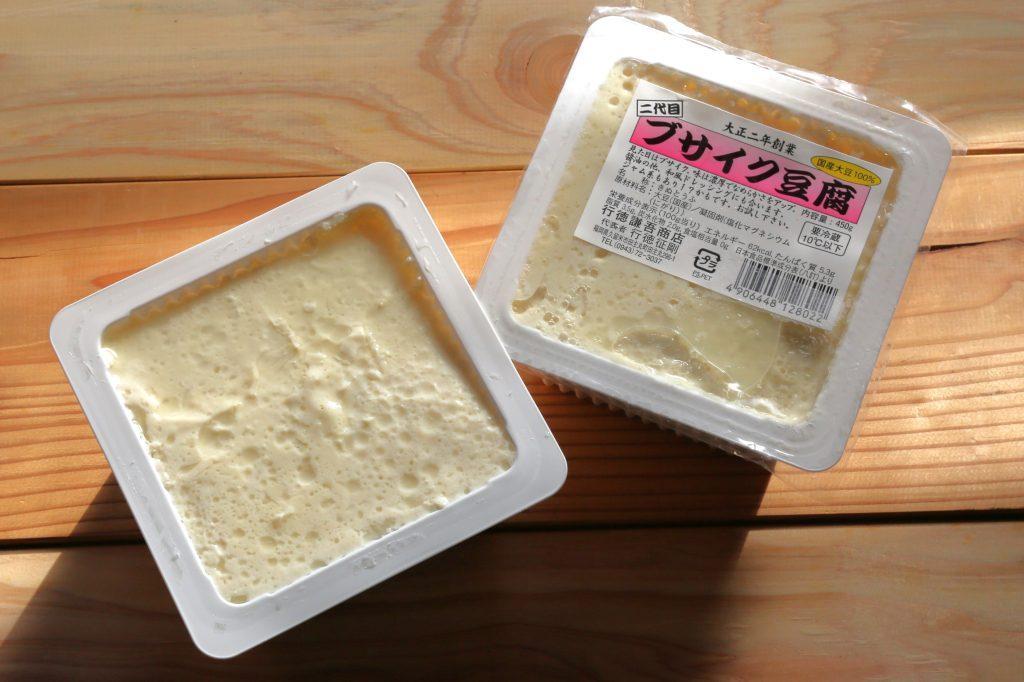
A family business that I had no intention of taking over.
He was born the son of a tofu maker, but he had no intention of taking over the business. His mother even told him that he did not have to take over the business. After graduating from college, he became a bank employee, but when he was in his mid-30s, he decided to take over the business and resigned.
As he grew older, he began to pay more attention to his hometown and thought that he could contribute to the town where he was born by taking over the store.
My boss said, "Are you sure?" I was held back, and my colleagues told me, "It's nice to have a guy who has something to take over.
Among many thoughts, the first rule and goal I set was to never go below my salary when I quit.
As a tofu maker in a small town, he knew that goal would be a tough one to achieve. Even so, he repeatedly poured his passion into "making something that people will say tastes good," using carefully selected ingredients and his own particular manufacturing methods. He recalls that word of mouth spread that he had delicious tofu, and his sales channels expanded.
Now, in addition to Roadside Station Kurume, the company has increased its fan base by bringing its products to large supermarkets.
I'm thankful for the relationships I have with people," he says, his eyes narrowing.
The importance of manufacturing to elementary school students
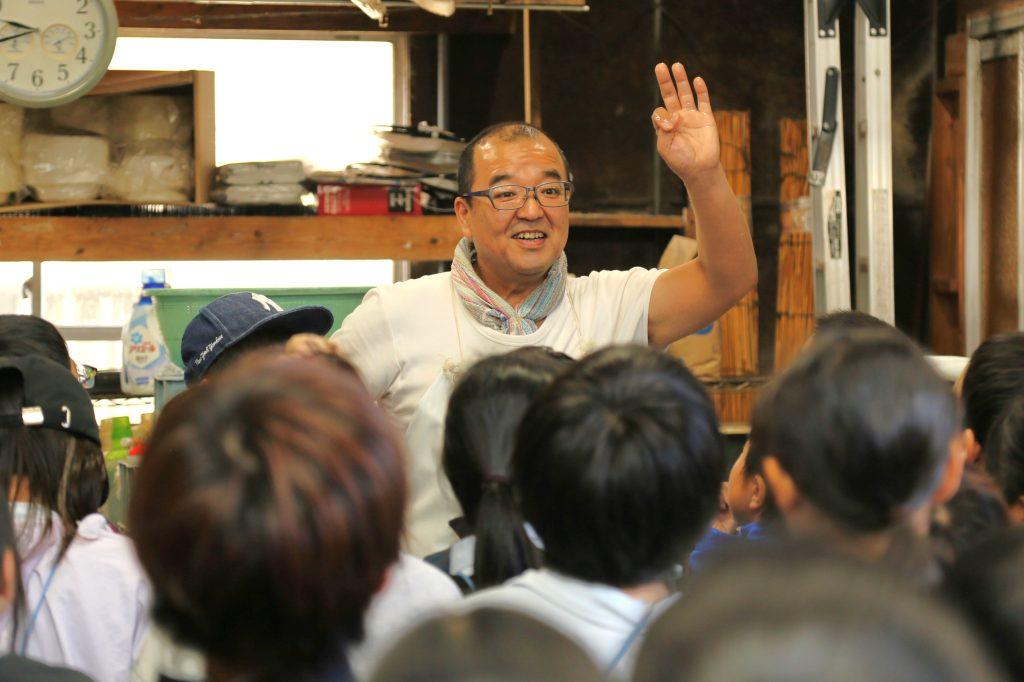
For the past 13 years, the company has conducted an annual tour for nearby elementary school students to see the tofu-making process in action, in the hopes of "conveying the importance of manufacturing to children.
The purpose of the event is to have visitors come to the store's workshop and learn how tofu is made. This is a valuable experience for today's children, who only know about the products displayed in the store.
On the day of the interview, about 60 children, including third graders from nearby elementary schools, visited the restaurant on the morning and afternoon of the regular holiday.
The children were very lively, tasting soybeans just soaked in water, soybeans that had been cooked and fluffed, and nigari, an essential ingredient for tofu, little by little, and sharing their impressions.
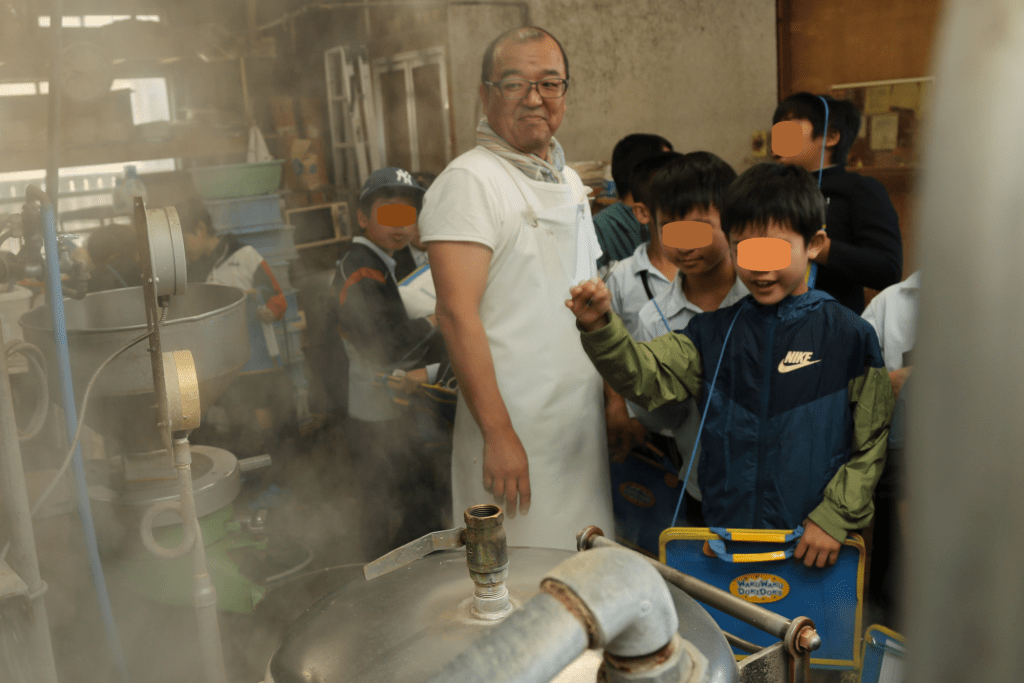
It was also the first time for me to see freshly squeezed "soy milk" with steam rising from the machine and warm. Many children think it is something that is poured into small packets and hardens.
How does this become tofu? Gyotoku says it is also a pleasure for him to see the expressions on the children's faces as they peek in with sparkling eyes.
I feel that children today have less imagination than when I was a child. He said he would be happy if seeing, touching, and feeling this kind of craftsmanship would stimulate them even a little and have a positive impact on their future dreams and the work they aspire to do.
Gyotoku Kengo Shoten
Address: 296-1 Tanushimaru, Tanushimaru-cho, Kurume-shi, Fukuoka
The main products are tofu and konnyaku. Their traditional tofu with the aroma and taste of soybeans, and handmade konnyaku made by scraping konnyaku from potatoes, which are now rare, are very popular. The store is also highly recommended for its okara-based side dishes and rintō (a sweet made from bean curd).
It can also be purchased at Roadside Station Kurume.
Signature product is ugly tofu.
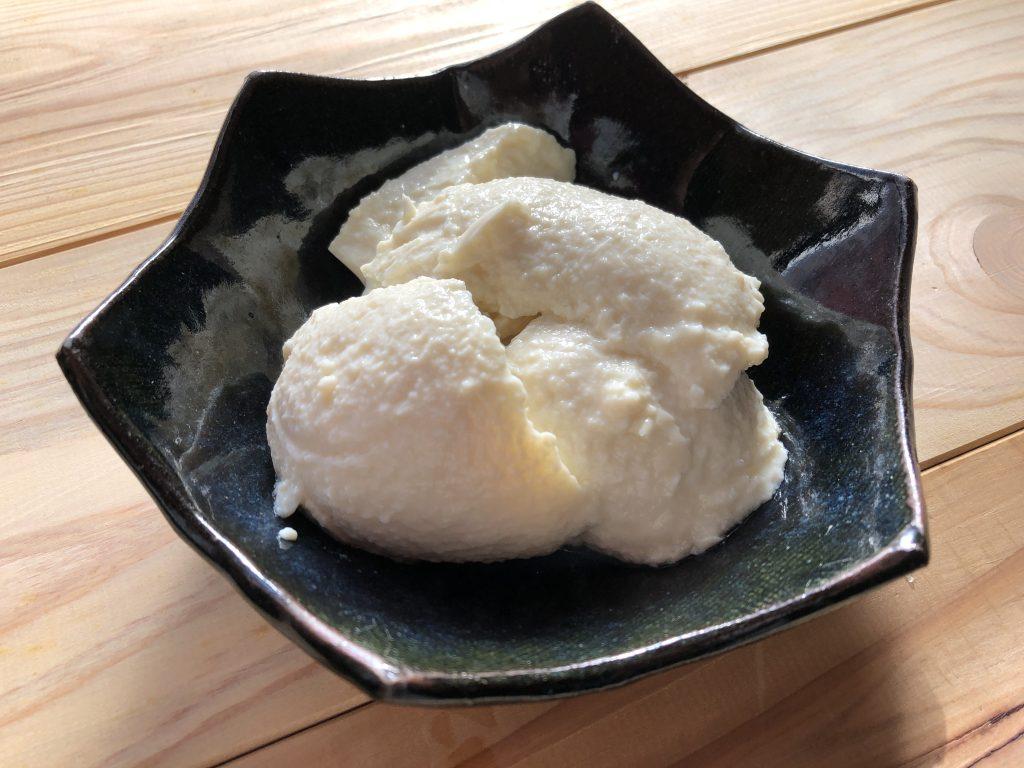
This is a fourth-generation original product, so named because of its pockmarked unevenness.
The surface is covered with yuba, and underneath, the moist texture on the tongue has the flavor and sweetness of soybeans firmly in place. Because the tofu is transferred to the packaged container at just the right time, it retains just the right amount of moisture, so the exquisite texture is preserved. You can taste the umami of the soybeans in this tofu.
The author recommends that you first take a bite without adding anything.
I urge you to try the second bite with salt. Of course, it is also delicious with soy sauce, but you can enjoy the flavor of soybeans.
In summer, keep it cold, and in winter, transfer it to a container and warm it in the microwave to make it more appetizing with a gentle soy aroma.
Handmade konjac, now rare

Most konjac on the market is made from powdered konjac, but Gyotoku's konjac is made from grated raw sweet potato, which is then kneaded using the same method that has been used since his father's time. This process not only gives the konjac a surprisingly good texture, but also creates a konjac with many small bubbles in it, allowing the flavor to soak in well.
They are great for simmering, and only require half the time of regular ones, as the flavors soak in quickly.
Very hard but very tasty "karinto
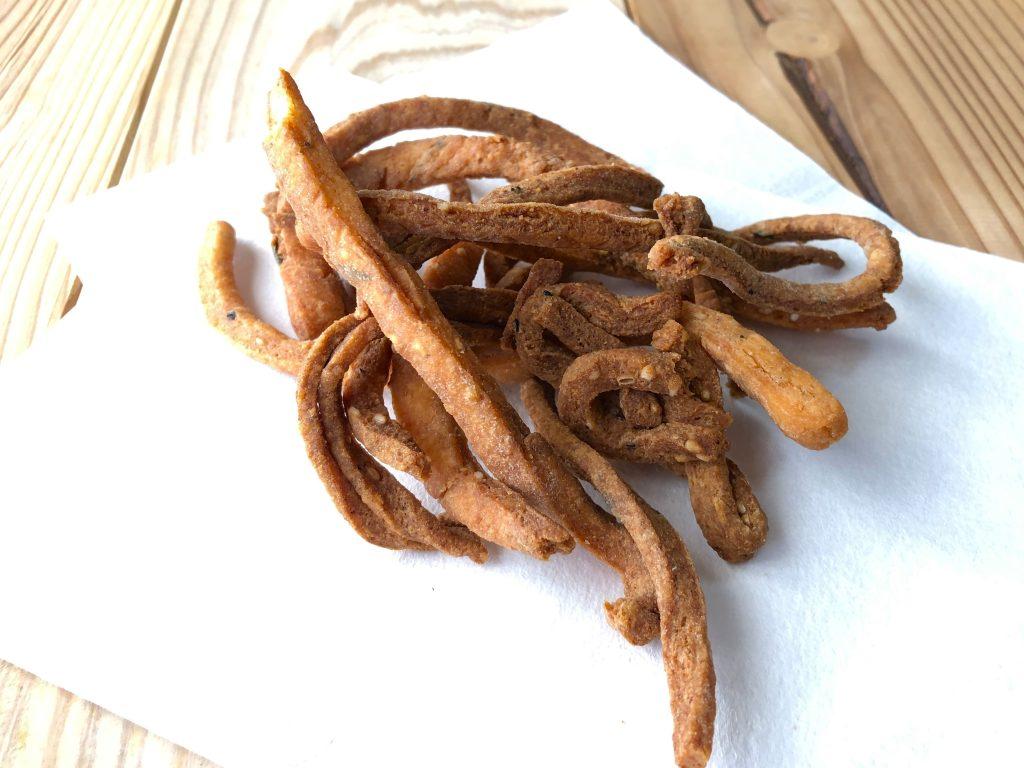
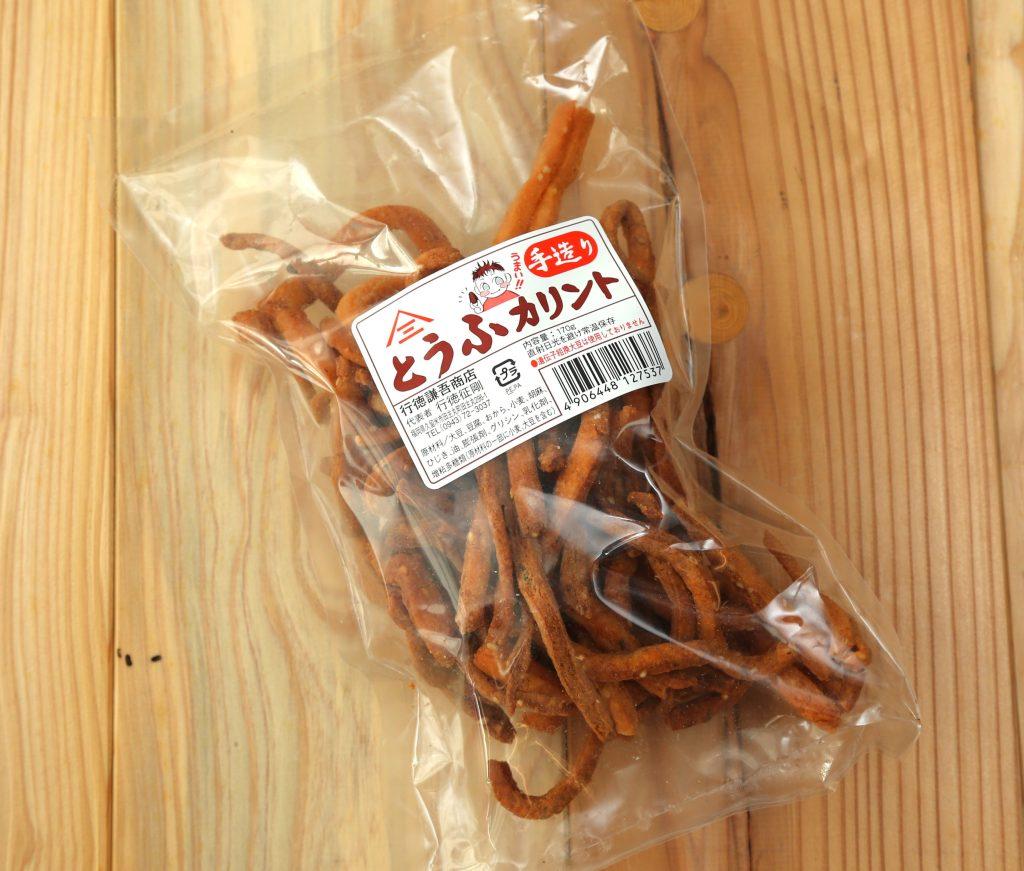
Handmade "karinto" containing okara (bean curd), hijiki (hijiki mushrooms), and sesame seeds is also recommended. The firm texture is addictive, and once you start eating it, you will not be able to stop. The flavor of soybeans and sesame seeds is also popular as a nutritious snack. It is one of those simple things that taste better.
